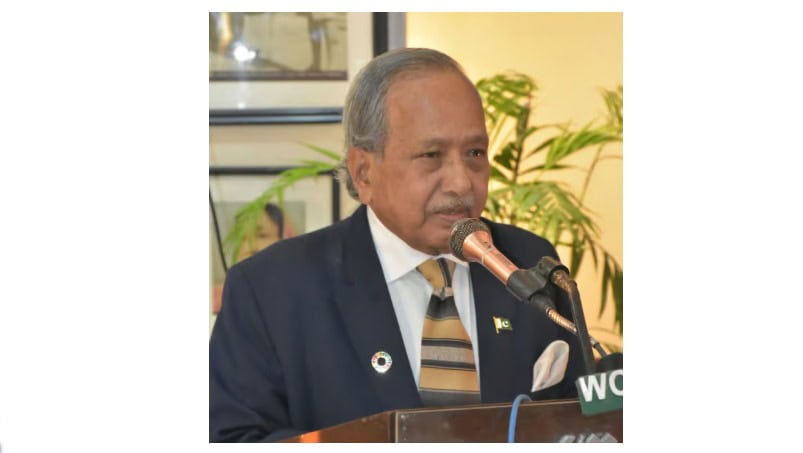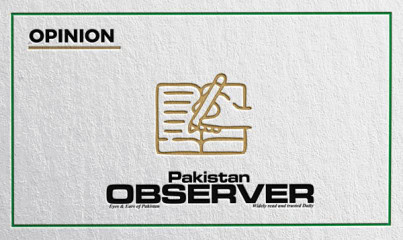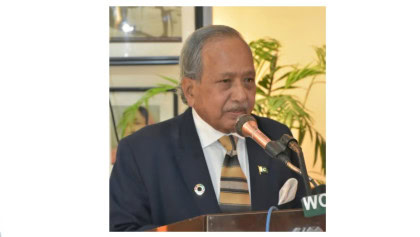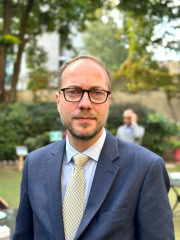When the family is small, whatever little they have they are able to share. There is peace. Take care of the children we already have, don’t enlarge the family.
By Amb. Salahuddin Choudhry
Life is like a dot of cell. You expand it, it becomes a circle. You are a dot on that circle. There you start your life……on the circular path of earth. You begin a journey….on that circle. There are many ups & downs you traverse. You see other lives…..people you meet and know, some you don’t. Some are small, some are big. Some you choose to be friendly with, some you ignore. Together with close & near ones you make a family. The families together make up a society. The people’s society is small in the beginning. As it grows & expands – gradually or fast – you choose selected ones to be with, just the way you choose to be with your OWN family, preferably SMALL. Wise, you choose to keep your family small….but with a big hope, to keep quality of life. No ? Yes, of course.
There, that’s how/why we ALL go for a SMALL FAMILY; keep a big hope and be HAPPY.
Yet, surely, we have to face the facts on the ground, standing tall….. !
Explosion of any kind anywhere in the world is dreaded – what about population explosion ?
Can we think seriously or ponder coolly whether even fast growth of population can be acceptable by any single nation or state today amidst hundreds of disasters or diseases – worsening year after year specially the global warming and climate crises, looking askance if we the human race is doing the right thing to our habitat or mother nature ?!
The UN tells and reminds us every year on 11th July we have to watch out on population lest we keep on doing injustice to nature and to ourselves. And to keep conscious of the negative effect of unwieldy population growth, UNFPA makes ALL – the global community – aware and focus on the problem of unabated expansion of population and its impact on Environment. We NEED to watch out.
Indeed, back in 1968, world leaders under UN auspices had declared people have the basic human right to decide the number and time of their children freely and responsibly. Regrettably, even after five decades, modern contraception remains out of reach for millions of adults – non-awareness and misperception holding them back mostly in the poor and developing countries.
The 2030 Agenda for Sustainable Development is the world’s blueprint for a better future. But, for many of the least developed nations, the challenges are getting compounded by rapid population growth as well as by Climate Change.
As estimated, roughly 83 million people are being added to the world’s population every year. Even assuming that fertility levels will continue to decline, the global population is expected to reach 8.6 billion in 2030, 9.8 billion in 2050 and 11.2 billion in 2100, according to the medium-variant projection.
UNFPA works to support family planning by ensuring a steady, reliable supply of quality contraceptives; strengthening national health systems; advocating policies supportive of family planning; and gathering data to support this work. And, it also provides global leadership in increasing access to family planning, by convening partners – including governments – to develop policies, and by offering programmatic, technical and financial assistance to developing countries.
Women, who account for the largest share of frontline health-workers are disproportionately exposed to contagious diseases. This and disruption of supply chains have impacted the availability of contraceptives and heightening the risk of unintended pregnancy. The ensued struggle caused sexual and reproductive health services to get sidelined and rise of gender-based violence. Alongside, other population problems like family planning, gender equality, hunger, maternal health, child marriage, human rights, right to health, new-born baby’s health, and so on got multiplied.
We, in Pakistan, have had no explicit population policy, although population was implicitly mentioned in all of the 5-year developmental plans. These plans voiced concerns over the population growth as an impediment to development. Pakistan started one of the earliest population programs in Asia. Family planning activities began as early as the 1950’s through the auspices of the Family Planning Association of Pakistan, a Non-governmental organization (NGO) which originated in 1953.
Since its independence, we have had to grapple with many problems. The country currently ranks fifth among the world’s countries after China, India, the USA, and Indonesia, with a population growth rate of 3.1 per cent per year. The population is expected to rise from 210 million people to 240 million by 2030. Its population was 33 million in 1950 and its rank was 14th in the world, but now it has alarmingly increased. The current population of Pakistan is 230 million according to latest UN projection.
Pakistan being among the most overpopulated countries in the world troubles the already vociferous State. Its one big problem is water scarcity, which by has by now has made it the most water-stressed country in South Asia within decades. Almost 30 million Pakistanis have no access to clean water. The population of Pakistan represents 2.56 percent of the world´s total population which arguably means that one person in every 39 people on the planet is a resident of Pakistan; so, water shortage issue will grow worse with population explosion.
Women in Pakistan continue to have an average off our children. Not enough is being done to reduce the birth rate. One of the main causes really is ineffective family planning and population control programs over many years as a result of which our population growth has continued more or less unabated. Consequence of fertility rates has been high and contraceptive needs have largely remained unmet. People in Pakistan regard continuing contraceptive practices as a bigger threat to their health than an occasional induced abortion. Men and women are reluctant to visit government family planning clinics because of lack of infrastructures and information.
Successive governments have paid no attention towards family planning and the apathy led to rapid population growth that outstrips development gains. If we had had the same population as at independence, we would be much more prosperous today.
The country, arguably, is no more agrarian. And, this has happened for all the wrong reasons. While it did not have any policy to control exploding rates of population, a majority of the lands that are now being turned into villages, towns, and housing societies were once part of the country’s vibrant agricultural landscape. If the population rise continues to take place at the current pace, in a few decades, the country will face food insecurity.
UNESCO indicates that in the present scenario, one in four Pakistani children will not be finishing primary school by the deadline of 2030. It is a pathetic situation – educational facilities are growing, but not fast enough to cope up with population growth.
The author is a Rotarian and former senior career diplomat. He is available on saladinch168@gmail.com and @SaladinCh
















